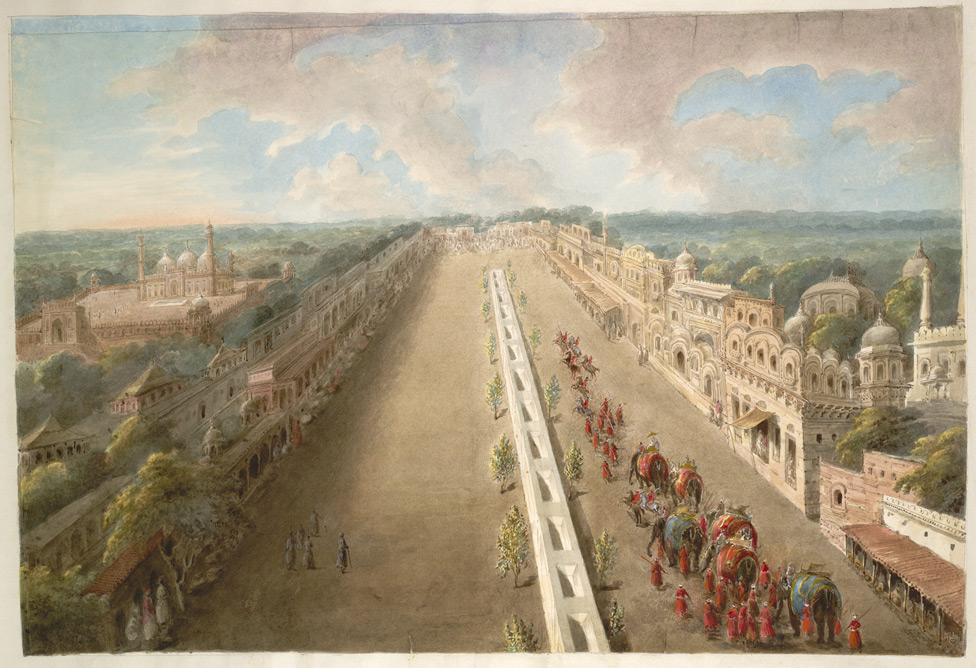

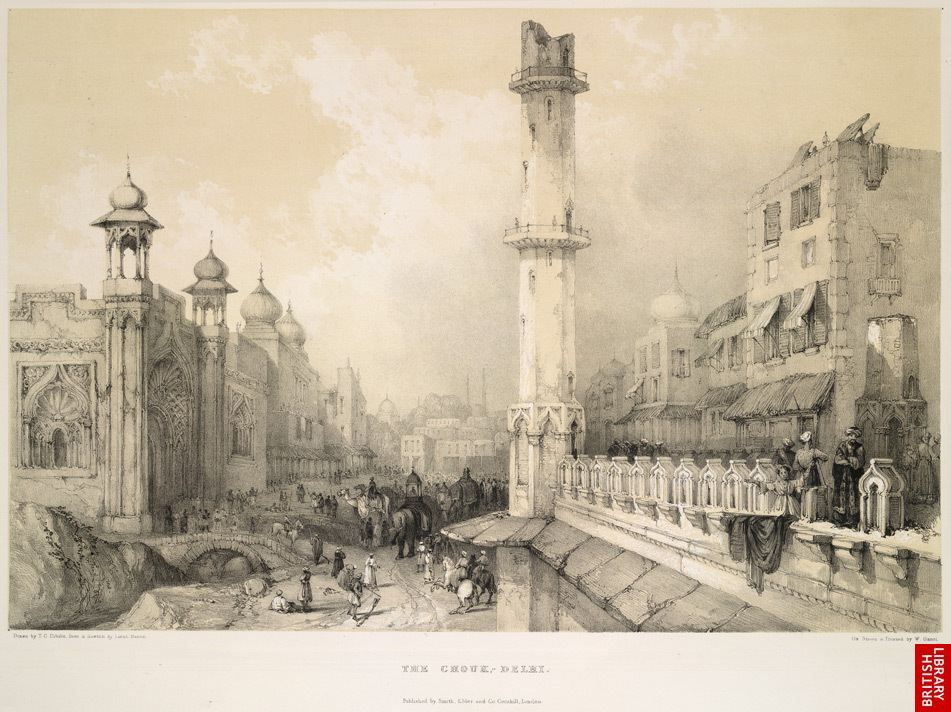
*"Chandni Chauwk," plate 10 from H. H. Wilson's 'The Oriental Portfolio', 1841* (BL)
*Begum Samru's house [which faced onto Chandni Chauk], by Mazhar Ali Khan; from the Metcalfe album, c.1840's* (BL) [*Mazhar 1840's*]

"Chandnee Chauk (Silver-Street) Delhi," a wood engraving from the Illustrated London News, 1857: *more information: harappa*; *a very large scan of this engraving*
Source: ebay, Sept. 2004
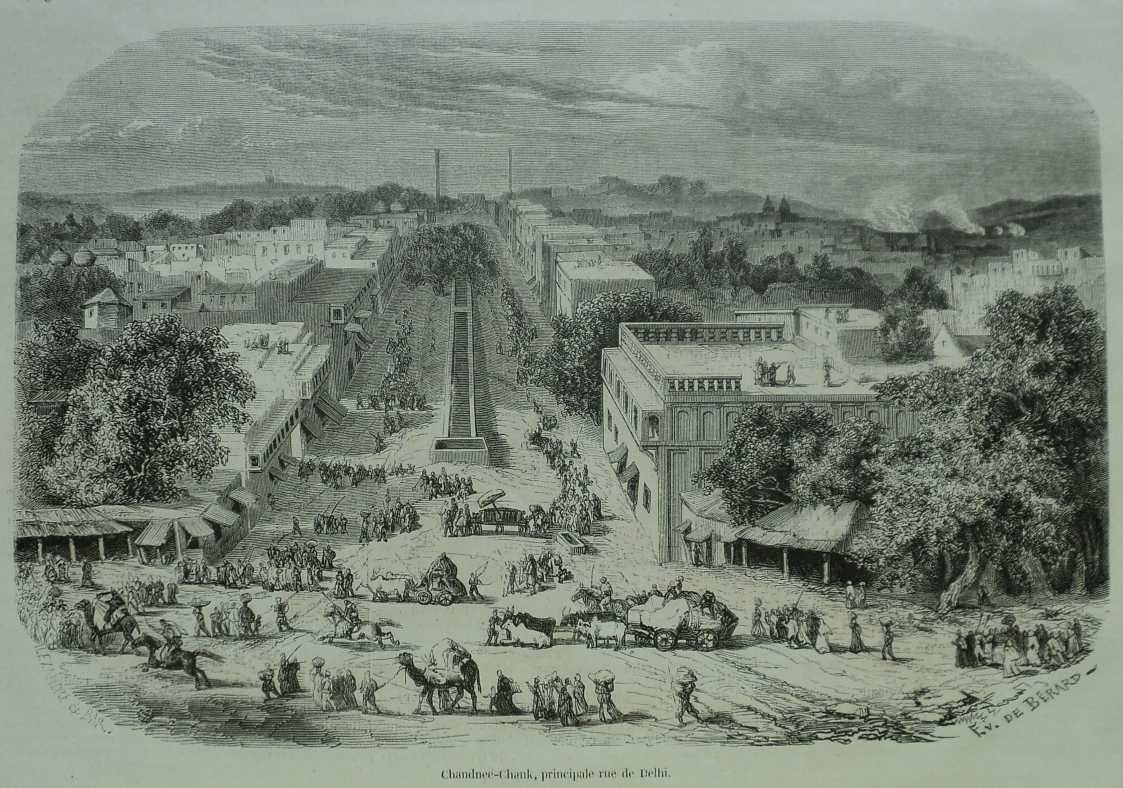

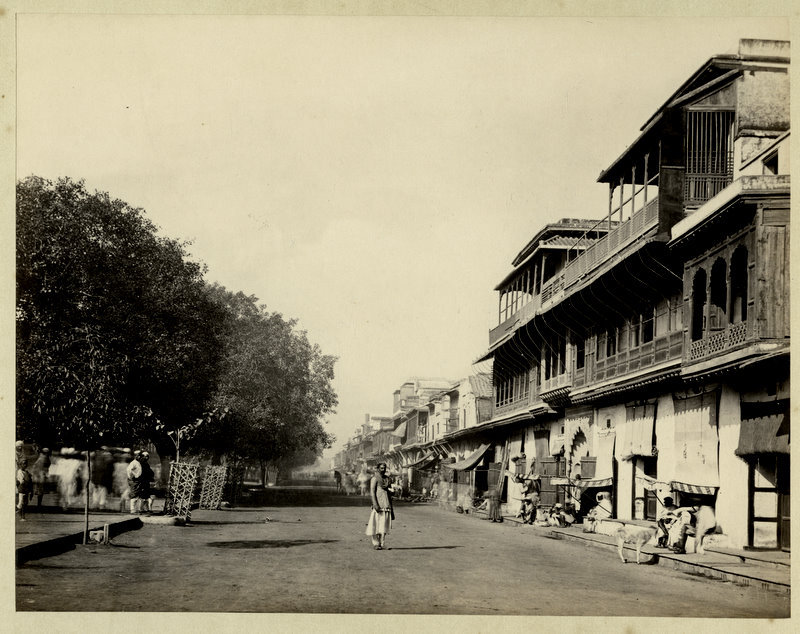
*"The Prince of Wales at Delhi, the Chandny Chowk," from the Illustrated London News, 1876*
Source: ebay, Oct. 2005
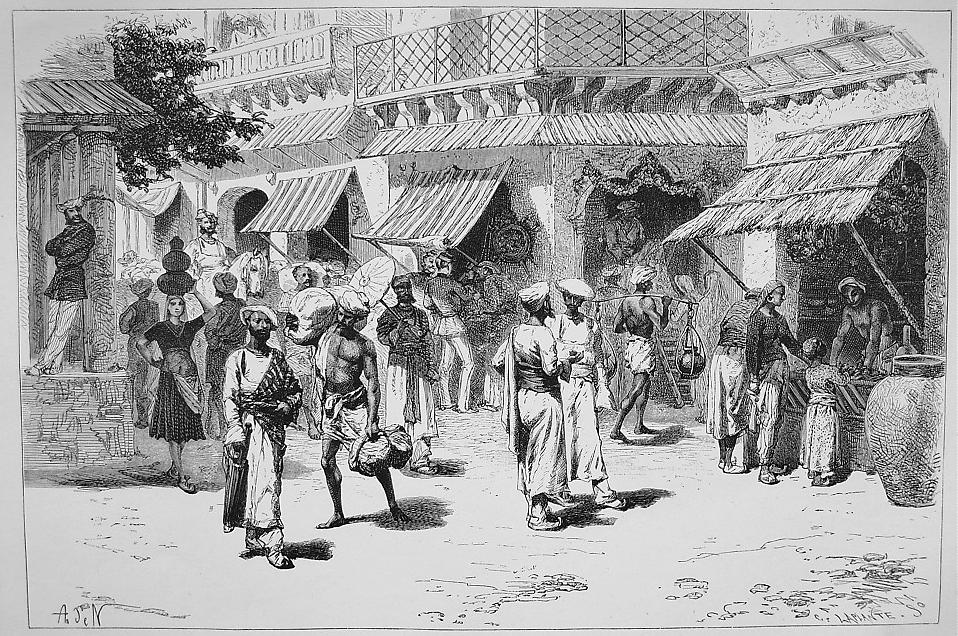
"Cross-roads, Chandni Chowk, Delhi," Bickers & Son, London, 1878; *a very large scan of this engraving*
Source: ebay, Mar. 2007
*"Chandni Chawk, Delhi," a silver gelatin print, c.1900*
Source: ebay, Nov. 2007
*"Chandni Chawk Street, Delhi," from a photo album by H. and A. Mirza, early 1900's*
Source: ebay, Nov. 2006
*"Your money's worth of juicy fruit, at a stand on Chandni Chouk," a stereoscopic image, 1903* (BL); *stereoscopic view, 1903*
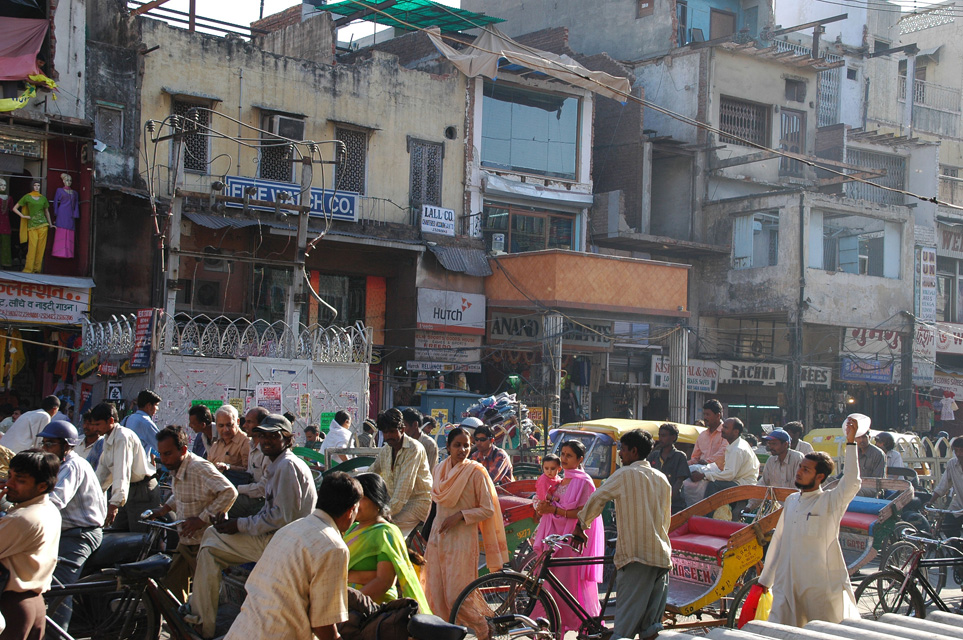
A pedestrian's-eye view of Chandni Chauk today
Source:
http://www.tropicalisland.de/india/delhi/pages/DEL%20Delhi%20-%20Chandni%20Chowk%20street%20shopping%20bazaar%20with%20busy%20people%20in%20colourful%20dress%203008x2000.html
(downloaded July 2005)
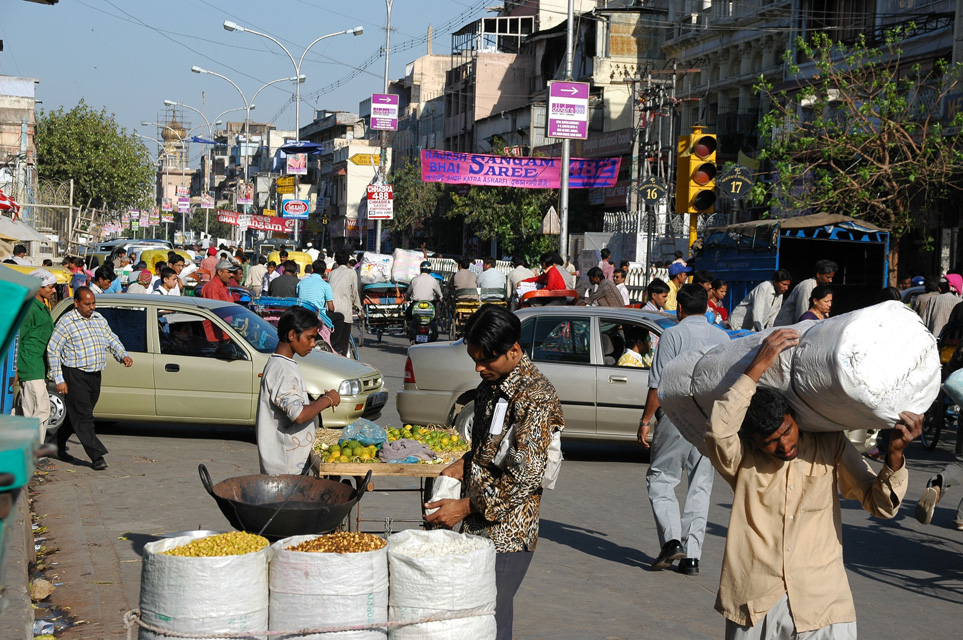
Traffic patterns on Chandni Chauk nowadays
Source:
http://www.tropicalisland.de/india/delhi/pages/DEL%20Delhi%20-%20Chandni%20Chowk%20street%20shopping%20bazaar%20with%20street%20stall%20selling%20limes%203008x2000.html
(downloaded July 2005)
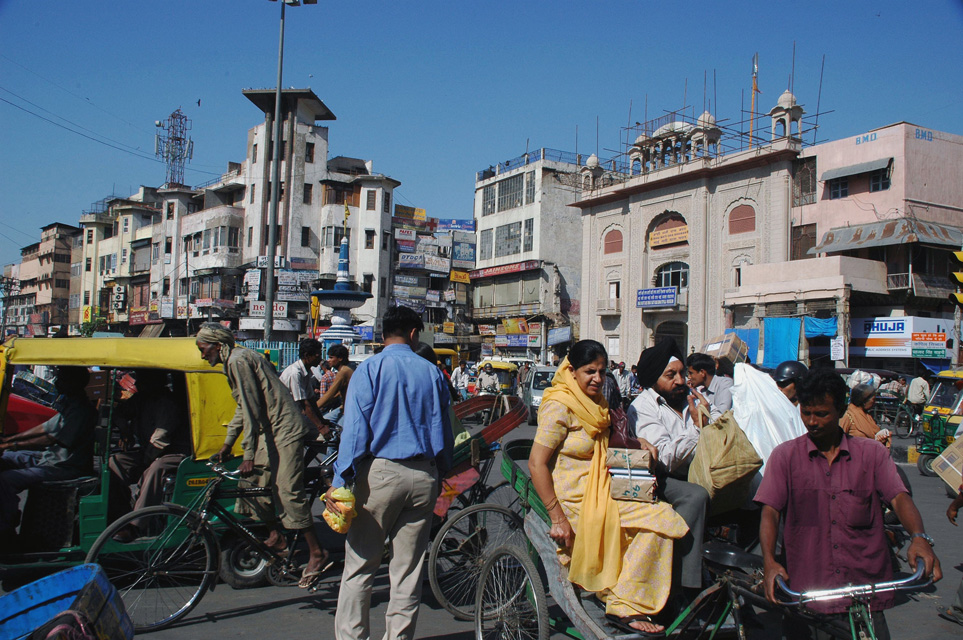
One more modern view
Source:
http://www.tropicalisland.de/india/delhi/pages/DEL%20Delhi%20-%20Chandni%20Chowk%20street%20shopping%20bazaar%20busy%20intersection%203008x2000.html
(downloaded Jan. 2006)

And why not an elephant?
Source:
http://www.flickr.com/photo_zoom.gne?id=74763106&size=o
(downloaded Sept. 2006)
Of the two streets described by Bernier, the longer extended from the Lahore Gate of the city to the Lahore Gate of the citadel, and the other from the Delhi Gate of the city to the Lahore Gate of the fort. Both these streets were divided into several sections, each of which was known by a different name.
The section between the Lahore Gate of the fort and the entrance of the street called the Dariba, known as the Khani Darwazah, was called the Urdi or the Military Bazaar; owing, very probably, to the circumstances of a portion of the local garrison having been once quartered about the place. Between the Khani Darwazah and the present Kotwali, or the Head Police Station of the city, the street has the name of Phul ka Mandi or the flower market. The houses in front of the Kotwali were built at a short distance from the line of the rest of the houses in the street, so as to form a square.
Between the Kotwali and the gate known as the Taraiah, was the Jauhari or the Jewellers' Bazaar; between the Taraiah and the neighbourhood known as Asharfi ka Katra, was, par excellence, the Chandni Chauk. There was a talk in the centre of the Chauk the site of which is now occupied by the Municipal Clock Tower, and beyond this to the Fateypuri Masjid was the Fatehpuri Bazaar. The houses round Chandni Chauk were of the same height, and were ornamented with arched doors and painted verandahs. To the north and south of the square there were two gate-ways, the former leading to the Sarai of Jahanara Begam, and the latter to one of the most thickly populated quarters of the city. Round the tank the ground was literally covered with vegetable, fruit, and sweetmeat stalls. In the course of time the whole of this long street came to be known as the Chandni Chauk.
This grand street was laid out by Jahanara Begam, daughter of Shah Jahan.... From the Lahore Gate of the fort to the end of the Chandni Chauk the street was about 40 yards wide and 1,520 yards long. Through the centre of this street ran the canal of 'Ali Mardan, shaded on both sides by trees. On the eastern end of the Chandni Chauk stands the Lahore Gate of the Fort, and on the opposite end the handsome mosque of Fatehpuri Begam.
--Carr Stephen, Archaeology and Monumental Remains of Delhi (Author, 1876), pp. 246-47
== Indian Routes index == Indian Routes sitemap == Glossary == FWP's main page ==